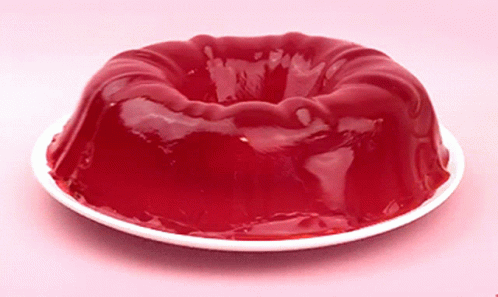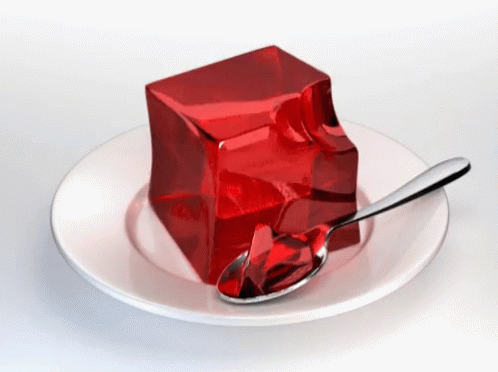World Gelatin Day + Día Mundial de la Gelatina [Eng+Spa]
This Tuesday, April 2, is ending. He planned to write the log of the day about a couple of unpleasant incidents that had occurred, in addition to brightening up the post a little by commenting on an entertaining anniversary, on the topic of #food.
But (unfortunately there is a 'but'), I spent my time responding to other people on several accounts that I had pending and I have run out of time. We are minutes away from finishing the day. Sorry that today's post is like this, with a bit of a fluffy wording.
+++
But (unfortunately there is a 'but'), I spent my time responding to other people on several accounts that I had pending and I have run out of time. We are minutes away from finishing the day. Sorry that today's post is like this, with a bit of a fluffy wording.
+++
Este marte, 2 de abril, está terminando. Pensaba escribir el registro del día sobre un par de incidentes desagradables que habían ocurrido, además de alegrar un poco el post comentando una Efeméride entretenida, del tema de la #comida.
Pero (desgraciadamente hay un ‘pero’), se me pasó el tiempo respondiendo a otras personas en varias cuentas que tenía pendiente y me he quedado sin tiempo. Estamos a minutos de terminar el día. Disculpa que el post de hoy me quede así, como que de redacción un poco volada.
+++
Pero (desgraciadamente hay un ‘pero’), se me pasó el tiempo respondiendo a otras personas en varias cuentas que tenía pendiente y me he quedado sin tiempo. Estamos a minutos de terminar el día. Disculpa que el post de hoy me quede así, como que de redacción un poco volada.
+++

Image's Source - Fuente de la Imagen
By the way, today is World Gelatin Day. Yes, that old delicious dessert, which can also be found as an ingredient in other dishes. As far as I checked, gelatin was produced commercially, and offered for sale, as an adhesive, not as a food. It was the product of cooking animal bones, among other ingredients. For me it was surprising, but then I remembered that I had the case of a liquor that began to be marketed as a cologne, and the case of a carbonated drink that is widely consumed today, and that began to be sold in pharmacies, since it was formulated as a medicine, a stomach tonic to be precise.
Well, whatever. Gelatin was already known since the time of the Egyptian Empire, so its history in cuisine goes back several millennia. I was surprised that for centuries it didn't really become very popular. So its rediscovery, in 1682, by the Frenchman Denis Papin, could be counted as the milestone that began its presence in Western cuisine.
+++
Well, whatever. Gelatin was already known since the time of the Egyptian Empire, so its history in cuisine goes back several millennia. I was surprised that for centuries it didn't really become very popular. So its rediscovery, in 1682, by the Frenchman Denis Papin, could be counted as the milestone that began its presence in Western cuisine.
+++
Por cierto, hoy se celebra el Día Mundial de la Gelatina. Sí, ese viejo postre delicioso, que también pude hallarse como ingrediente de otros platillos. Hasta donde revisé, la #gelatina se produjo comercialmente, y se puso a la venta, como un adhesivo, no como un alimento. Era el producto de una cocción de huesos animales, entre otros ingredientes. Para mí fue sorprendente, pero recordé luego que tenía el caso de un licor que se comenzó comercializando como colonia, y el caso de una bebida carbonatada de mucho consumo popular hoy en día, y que comenzó a venderse fue en farmacias, pues era formulado como una medicina, un tónico estomacal para ser preciso.
Bien, como sea. La gelatina ya se conocía desde la época del Imperio Egipcio, así que su historia dentro de la cocina tiene ya varios milenios. Me sorprendí de que durante siglos no se popularizara mucho en realidad. Así que su redescubrimiento, en 1682, por el francés Denis Papin, se podría contar como el hito que dio inicio a su presencia en la cocina de occidente.
+++
Bien, como sea. La gelatina ya se conocía desde la época del Imperio Egipcio, así que su historia dentro de la cocina tiene ya varios milenios. Me sorprendí de que durante siglos no se popularizara mucho en realidad. Así que su redescubrimiento, en 1682, por el francés Denis Papin, se podría contar como el hito que dio inicio a su presencia en la cocina de occidente.
+++

Image's Source - Fuente de la Imagen
I am suspecting that this recipe has its roots in Arab or Turkish #gastronomic culture, due to medieval invasions, in addition to commercial contacts born during the time of the great explorations of the 15th and 18th centuries, but I did not find a reference that confirmed my suspicion.
In 1754, it was put on sale as an adhesive, but its real takeoff point should be counted from 1845, when the American industrialist and inventor Peter Cooper created an industrialized formula, with mass production, and already focused as a #dessert for widespread sale.
It's been a long time... And speaking of time, it's time for me to hit the publish button or I'm running out of Tuesday. I hope you are well and that we can read again another time.
+++
In 1754, it was put on sale as an adhesive, but its real takeoff point should be counted from 1845, when the American industrialist and inventor Peter Cooper created an industrialized formula, with mass production, and already focused as a #dessert for widespread sale.
It's been a long time... And speaking of time, it's time for me to hit the publish button or I'm running out of Tuesday. I hope you are well and that we can read again another time.
+++
Estoy sospechando de que esta receta tiene sus raíces en la cultura gastronómica árabe o turca, debido a las invasiones medievales, además de los contactos comerciales nacidos durante la época de las grandes exploraciones de los siglos XV y XVIII, pero no encontré una referencia que confirmara mi sospecha.
En 1754 pasó lo de ponerlo a la venta como adhesivo, pero su punto real de despegue debería ser contado a partir de 1845, cuando el industrial e inventor norteamericano Peter Cooper creó una fórmula industrializada, con producción masiva, y enfocado ya como un #postre para venta generalizada.
Mucho tiempo ha pasado… Y, hablando de tiempo, es hora de que pulse el botón de publicar o se me acaba el martes. Te deseo que tú estés bien y que nos podamos leer de nuevo en otra oportunidad.
+++
En 1754 pasó lo de ponerlo a la venta como adhesivo, pero su punto real de despegue debería ser contado a partir de 1845, cuando el industrial e inventor norteamericano Peter Cooper creó una fórmula industrializada, con producción masiva, y enfocado ya como un #postre para venta generalizada.
Mucho tiempo ha pasado… Y, hablando de tiempo, es hora de que pulse el botón de publicar o se me acaba el martes. Te deseo que tú estés bien y que nos podamos leer de nuevo en otra oportunidad.
+++

This post, on the #blockchain #Hive, is in the We Are Alive Tribe community, it's part of the #IAmAliveChallenge
This challenge is an initiative of @flaxz
The 4 points to join the #IAmAliveChallenge, includes using the hashtag #alive to post to We Are Alive Tribe and earn ALIVE tokens.
This challenge is an initiative of @flaxz
The 4 points to join the #IAmAliveChallenge, includes using the hashtag #alive to post to We Are Alive Tribe and earn ALIVE tokens.
Esta publicación, en la #blockchain #Hive, está en la comunidad We Are Alive Tribe, es parte del #IAmAliveChallenge
Este desafío es iniciativa de @flaxz
Los 4 puntos para unirte al #IAmAliveChallenge, incluyen el uso de la etiqueta #alive para publicar en We Are Alive Tribe y ganar tokens ALIVE.
Este desafío es iniciativa de @flaxz
Los 4 puntos para unirte al #IAmAliveChallenge, incluyen el uso de la etiqueta #alive para publicar en We Are Alive Tribe y ganar tokens ALIVE.

Image's Source - Fuente de la Imagen
0
0
0.000
!GIF Gelatin Day
!HBIT !DHEDGE
!LOLZ !MEME !COFFEE
!PGM !LUV !BBH
Via Tenor
Weird and funny GIF
!LUV
pedrobrito2004, edgerik sent you LUV. 🙂 (1/10) tools | trade | connect | wiki | daily
Made with LUV by crrdlx.
!Gif Funny gelatin image.
!LUV !ALIVE
Via Tenor
A very weird GIF
@edgerik! You Are Alive so I just staked 0.1 $ALIVE to your account on behalf of @ pedrobrito2004. (1/10)
The tip has been paid for by the We Are Alive Tribe through the earnings on @alive.chat, feel free to swing by our daily chat any time you want, plus you can win Hive Power (2x 50 HP) and Alive Power (2x 500 AP) delegations (4 weeks), and Ecency Points (4x 50 EP), in our chat every day.

edgerik, pedrobrito2004 sent you LUV. 🙂 (1/3) tools | trade | connect | wiki | daily
Made with LUV by crrdlx.
Está bueno el detalle, yo jamás imaginé que era pegamento en su principio.
Me alegra que ahora sea un alimento, que mucha gente confunde con una chuchería.